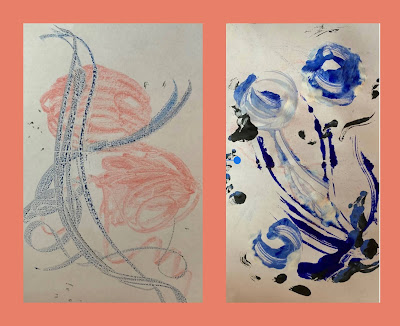Materials- Colorful items that you can find around your house. Cositas coloridas que tu puedes encontrar en tu casa.
Making-
1. Collect 6 items from around your house, one for each color of the rainbow. Recoger seis cositas, uno para cada color.
2. Organize the items by color in order of the rainbow: red, orange, yellow, green, blue, and violet. Organizar las cositas por color en orden del arco iris: rojo, anaranjado, amarillo, verde, azul, y violeta.
3. Show your work to the rest of your class. Mostrar tu trabajo a la clase.
*Repeat the above activity, collecting only items that are the color black.

*Repeat the above activity, collecting only items that are the color black.


Inspiration- The artwork of Ekua Holmes is filled with bright and happy colors. Ekua creates beautiful compositions using the technique of collage, cutting and glueing together different papers or fabrics to make a picture. She is the illustrator for many picture books, including the one above, Black is a Rainbow Color.


















































